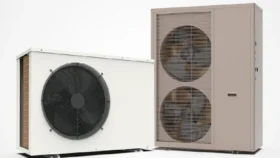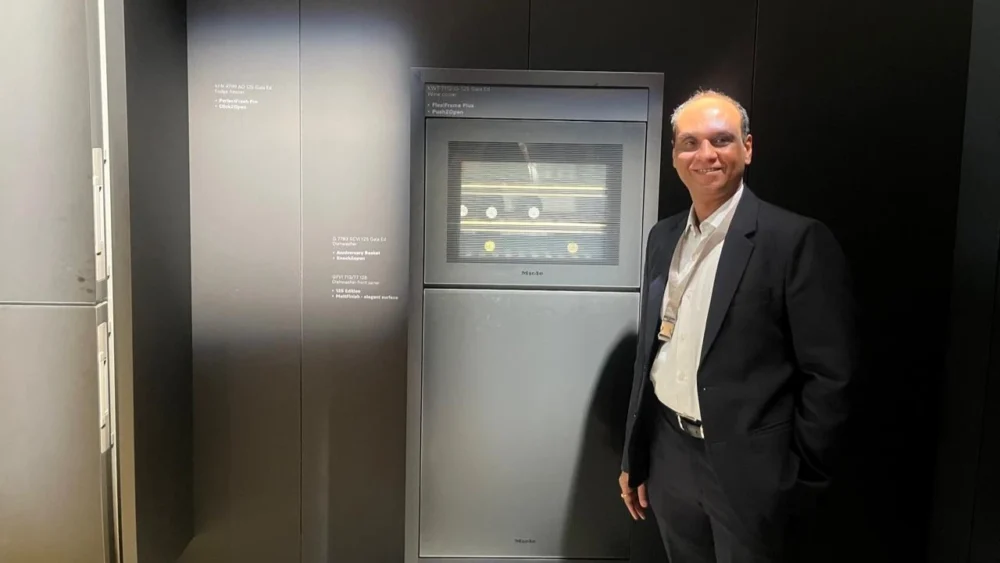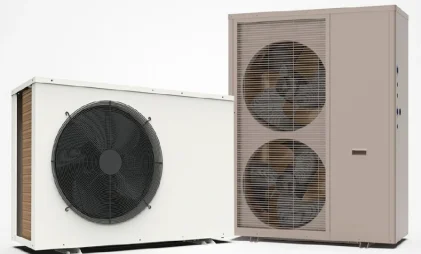LATEST STORIES

Installation of heat pump water heater: Factors to consider at the construction stage
Planning to build a new home or commercial project? Are you aware that heat pumps can be the best solution to meet your hot water

Canadian Wood & SVCA host ‘Wood is Good’ Intercollege Design Competition on World Earth Day
Canadian Wood is a British Columbia provincial government’s crown corporation. It’s officially known as Forestry Innovation Consulting India Pvt Ltd (FII India). Canadian Wood collaborated

65+ Trendy mirror designs for easy home decor (Shop online!)
Mirrors are an inexpensive way to add depth and elegance to any room. The perfect one can boost the aesthetic appeal of a room by

Energy-efficient heat pump water heaters help consumers save energy & the environment
The drive for environmental awareness is currently at its peak. Stakeholders from different fields have taken up the cause of educating people on the ill

21+ Swoon-worthy swimming pool designs & types (9 is must see)
Summer is here in India, and it’s only getting hotter from here. So, now is the time to take the plunge and invest in a

17 best cafes in India | List of aesthetic coffee shops in India
With many new coffee shops mushrooming in every city, coffee culture has transcended into a unique and international experience. You can now experience culture, coffee
Feature Products
Interviews
Miele is celebrating 125 years at this year’s EuroCucina: Rana Pratap Singh
Miele is a well-established lifestyle brand in the built-in appliances space and resonates well with the premium modular kitchens market in India. In our latest in series Expert Talk with BuildingandInteriors, we present an exclusive and in-depth conversation with Rana Pratap Singh, Managing Director, Miele India Pvt. Ltd. His long
LATEST STORIES
Installation of heat pump water heater: Factors to consider at the construction stage
Planning to build a new home or commercial project? Are you aware that heat pumps can be the best solution to meet your hot water …
Canadian Wood & SVCA host ‘Wood is Good’ Intercollege Design Competition on World Earth Day
Canadian Wood is a British Columbia provincial government’s crown corporation. It’s officially known as Forestry Innovation Consulting India Pvt Ltd (FII India). Canadian Wood collaborated …
65+ Trendy mirror designs for easy home decor (Shop online!)
Mirrors are an inexpensive way to add depth and elegance to any room. The perfect one can boost the aesthetic appeal of a room by …
Energy-efficient heat pump water heaters help consumers save energy & the environment
The drive for environmental awareness is currently at its peak. Stakeholders from different fields have taken up the cause of educating people on the ill …
21+ Swoon-worthy swimming pool designs & types (9 is must see)
Summer is here in India, and it’s only getting hotter from here. So, now is the time to take the plunge and invest in a …
17 best cafes in India | List of aesthetic coffee shops in India
With many new coffee shops mushrooming in every city, coffee culture has transcended into a unique and international experience. You can now experience culture, coffee …
Feature Products
Interviews
Miele is celebrating 125 years at this year’s EuroCucina: Rana Pratap Singh
Miele is a well-established lifestyle brand in the built-in appliances space and resonates well with the premium modular kitchens market in India. In our latest in series Expert Talk with BuildingandInteriors, we present an exclusive and in-depth conversation with Rana Pratap Singh, Managing Director, Miele India Pvt. Ltd. His long
Design Ideas
In interior design, even the smallest details count in shaping the overall look of the space. Whether you’re envisioning a vibrant hall colour combination that sets the tone for your gatherings, or seeking the perfect blend of functionality and style with interior bedroom design, we’re here to guide you. From exploring the soothing palette of bedroom colours to envisioning the perfect window and door designs that invite natural light and elegance into your home, every element contributes to the harmony of your space. We have compiled a list of our most popular articles covering every aspect of your home.
Interior bedroom design – The bedroom deserves meticulous attention to detail. The ambience of this space sets the rhythm of your day. Explore our curated collection of stunning bedroom designs that ignite inspiration and guide you towards the bedroom of your dreams.
Bedroom colours – Explore colour psychology and understand how different shades can influence your mood. Learn how to use colour to visually expand a cosy space or balance the light in a sun-drenched room. Furthermore, feast your eyes with 115 stunning wall colour schemes and combinations.
Bedroom decor ideas – Find exclusive bedroom decor ideas that will blow your mind. Discover popular colour combinations, essential furniture pieces, and expert tips for both small and large bedrooms. Whether you’re seeking budget-friendly solutions or aiming to elevate your space to luxurious heights, this article has everything you need to begin your bedroom decoration journey.
False ceiling designs for bedroom – Often neglected ceilings enhance the overall aesthetic of any space. However, we have covered this aspect of a bedroom with careful consideration. Whether you’re drawn to the elegance of coffered or tray ceilings, the whimsy of starry night designs for children’s bedrooms, or the sleekness of modern metallic accents, we’ve got a false ceiling design to suit every style and preference.
Simple false ceiling designs – False ceilings influence the aesthetics and functionality of a room. By exploring different materials, shapes, colours, and lighting techniques, false ceilings offer a unique opportunity to enhance the ambience of any room. Our article explores a plethora of innovative false ceiling design ideas to elevate your space.
Kitchen setting – Revamp your kitchen with expert insights and inspiration! Our guide features 37+ essential kitchen setting ideas, covering everything from ergonomics to organization tips. Explore modular layouts, cost considerations, and clever solutions for small spaces. Plus, dive into a gallery of unique modular kitchen settings. Upgrade your culinary space with our comprehensive resource.
Bathroom tile designs – Bathroom tile designs are crucial as they not only enhance the aesthetics of your space but also contribute to the overall functionality and ambience. Our article presents you with a curated selection of tile designs. Uncover 70 entrancing options for both floors and walls, complete with colour schemes to match any aesthetic. Plus, learn expert tips on selecting top-quality tiles. Have a look at our guide and discover the key to elevating your bathroom with the perfect tiles.
Wooden sofa set designs – Wooden sofa set designs have the innate ability to accentuate your space, infusing it with warmth, and creating inviting focal points. Dive into our guide showcasing 30+ wooden sofa set designs, curated to add unrivalled flair to your home. Discover expert tips on selecting the perfect set, from budget considerations to assessing quality. Plus, shop trendy options and find styling inspiration to transform your space into a haven of comfort and style. Upgrade your living experience with our curated selection.
Computer table design – The design of your computer table is paramount as it not only dictates the functionality of your workspace but also plays a crucial role in enhancing productivity. Upgrade your workspace with the perfect computer table! Explore our guide featuring 55+ designs curated to match your needs and style. From materials to diverse styles, find the ideal desk to enhance productivity and comfort. Check out unique ideas for a comfortable workspace and find your perfect match with us.
Marble floor design – Marble floors add a timeless elegant touch to Indian homes. Discover over 35 regal ideas to infuse your space with timeless luxury with our article. From the most popular designs to the best marble types for flooring, we cover it all. Learn the benefits of marble flooring and gain expert advice on selecting the right marble for your floor, along with essential dos and don’ts. Indulge in the opulence of marble and transform your home today.
Window design – Are you seeking to infuse your modern home with fresh character and style? Look no further than your windows! Our comprehensive guide not only showcases trending window designs but also delves into types, styling tips, selection criteria, maintenance guides, and FAQs. Discover the perfect window solutions that match your style with us.
Window grill design – Ornate window grills not only enhance the exterior charm of modern homes but also serve as functional elements, providing security to the space. In our article, we have covered a diverse range of window grill designs tailored to different design preferences along with insights into the sturdiest materials, key selection considerations, cost factors, maintenance tips, and FAQs.
Door design – Looking to revamp the appearance of your modern home? Our article presents 44 wooden main door designs that exude beauty and charm. Explore a curated collection of stunning door designs which includes buying options and trending designs based on materials, placement and style. Gain insights with expert advice on selecting the perfect door to complement your space. From Vastu tips to maintenance guides, we have got you covered. Find your ideal door solution today!
Glass door designs – Want to add a touch of elegance and sophistication to your home interiors? Explore our comprehensive guide featuring 126+ glass door designs and types. Discover popular ideas, explore alluring designs, learn about different glass options, weigh the advantages and disadvantages, and gain expert tips for installation. Plus, discover top brands offering quality glass door solutions. Elevate your interiors today with our expert insights and FAQs!
Wall texture design – Transform your space into a masterpiece of texture and style with our guide to wall texture designs! Our article presents 42 trendy decor ideas and techniques to elevate your home’s aesthetic appeal. Discover the advantages of using wall texture designs, explore options for both interiors and exteriors, learn about different materials and their applications, and find inspiration from top paint brands. Dive into the world of textured wall art with our DIY ideas on a budget. Find inspiration, tips, and answers to FAQs as you embark on a journey to redefine your walls.
Compound wall design – Compound wall designs are more than just functional boundaries; they serve as the first impression of your home. Elevate the allure of your property with our comprehensive compound wall design guidebook. Our article explains various types and materials used for construction, accompanied by stunning photos for inspiration. Discover expert tips to enhance your home’s exterior aesthetic and functionality. Plus, get answers to common questions to guide your design journey. Transform your compound walls into statement pieces with our insightful guide.
Colour combo for walls – Wall colour combinations are the palette of possibilities that breathe life into your home. Revitalise your living spaces with stylish makeovers using the perfect colour combinations for your walls! We bring you 19+ top-notch ideas that cater to every room in your home. Our article offers creative wall colour combos for bedrooms, living rooms, kitchens, bathrooms, and dining rooms. Discover the art of colour coordination with us and enjoy stylish makeovers that leave a lasting impression.
Hall colour combination – Transform your hall into a captivating space with our guide to stunning colour combinations! Check out our article for 15 ideas and expert tips for an amazing transformation. Explore trendy hall wall colour combinations for Indian homes, learn how to choose the best colours, and discover Vastu tips for harmonious vibes. Dive into the world of various paint types and finishes. Unlock the secrets to a mesmerising hall makeover with the right hues.
Colour combinations for room – Ready to transform your home with vibrant and versatile colour combinations? Our article provides a concise structure that covers everything you need to know. From understanding colour schemes based on the colour wheel to incorporating Vastu tips, we guide you through selecting and styling the perfect colour combinations for every room in your home. Explore our expert advice and create a visually stunning space that reflects your unique style.
Indian house colour combination outside – Transform your Indian house with our curated selection of head-turning colour combinations for exterior walls! Dive into an array of attractive options uniquely crafted for Indian houses. Plus, unlock expert tips to effortlessly select the ideal palette that complements your home’s architecture and surroundings. Elevate your curb appeal and leave a lasting impression with our inspired selections.
Normal house front elevation designs – Unlock the potential of your home’s facade with our ultimate guide to normal house front elevation designs! Explore 58 captivating ideas, images, and products curated to inspire your exterior transformation. From understanding the concept to selecting the best colour combinations and staying updated on changing trends, we cover it all. Plus, delve into expert advice, product recommendations, and a gallery of stunning images to kickstart your elevation journey.



















